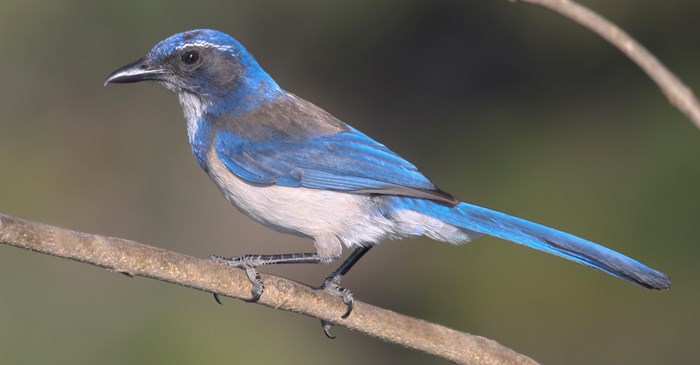Looking for the Western Scrub-Jay? It no longer exists. But not to worry; it hasn’t gone extinct. In 2016, scientists agreed the Western Scrub-Jay was actually two distinct species identified as either California Scrub-Jay or Woodhouse’s Scrub-Jay.
As you may imagine, the two bird species shared an identity for so long, they have near-identical physical characteristics, with their large size and blue and gray plumage that earned them the nickname of Western Blue Jay. Still, scientists have noted many differences.
Beak
The California Scrub-Jay’s beak curves into a hook, which helps it open nuts and seeds, while the Woodhouse’s is narrow and pointy, letting it reach inside a pine cone to grab the pinyon nut inside.
Habitat
The California Scrub-Jay is found all along the oak woodlands in the coastal areas of California, Washington and Oregon. Though Woodhouse’s Scrub-Jays are less common, they’re found in the arid woodlands with pinyon and pine in the southwestern U.S.
Disposition
The California Scrub-Jay is bold and outgoing, quite at home in dense human populations. Woodhouse’s Scrub-Jay is more reclusive.
The twist in this bird tale is that this isn’t the first time these birds have been renamed. Until the 1990s, the Western Scrub-Jay was known as simply the Scrub Jay. It shared an identity with what are now known as the Florida Scrub-Jay and the Island Scrub-Jay (found in Santa Cruz, California).
Like many of their fellow birds in the corvid family, these jays are known for their lively, social flocks, their raucous calls and their ability to recall their dozens of hiding places for acorns and pine nuts that they can consume later. Both the California Scrub-Jay and Woodhouse’s Scrub-Jay are frequent feeder visitors preferring sunflower seeds and peanuts. We recommend Lyric Supreme Mix filled with 50% sunflower seeds and nuts, and zero fillers.
